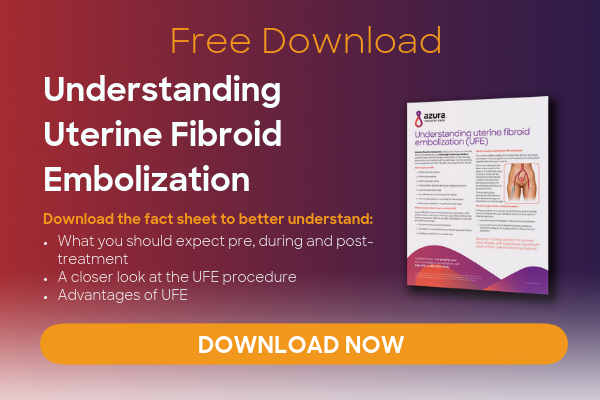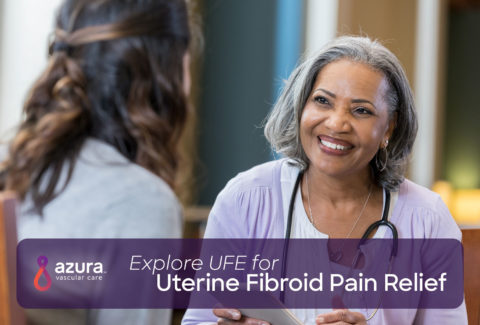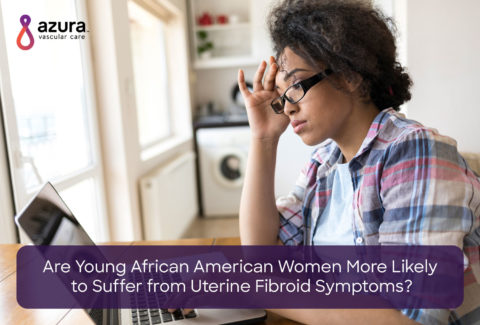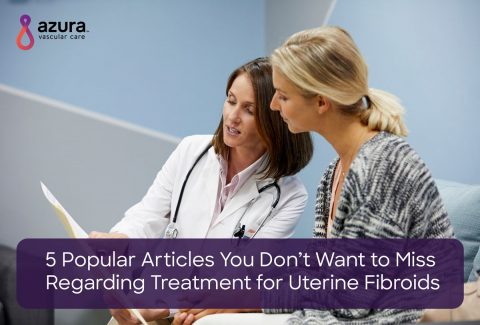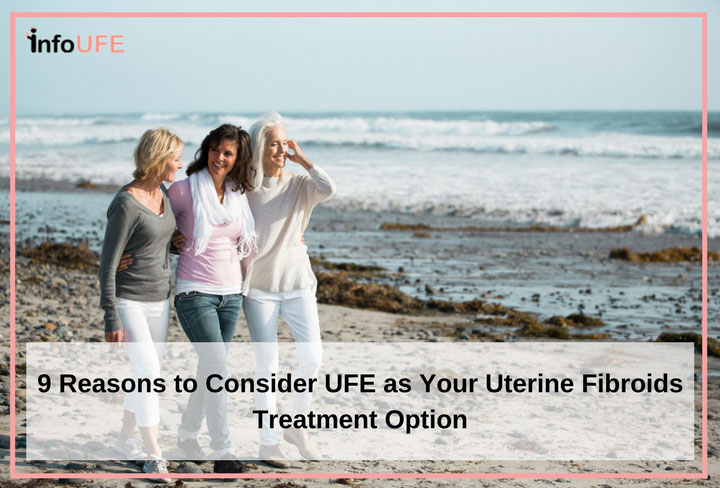
Are you looking for an alternative to surgery to treat your uterine fibroids? There are a variety of treatment options for these noncancerous growths of the uterus, and before you make any decisions on what course of treatment is best for you, you should know that surgery is not your only option. Uterine fibroid embolization (UFE) uses beads to block the blood supply to fibroids. If you think UFE may be the right choice for you, discuss UFE in detail with an interventional radiologist, a physician trained in the use of x-ray technology to perform procedures. Together you can determine if UFE is a potential option to treat your uterine fibroids.
9 Reasons to Consider UFE
1. Recover in 1-2 weeks
 Uterine fibroid embolization recovery typically takes about 1- 2 weeks. You may have some cramping that is usually the worst 2 – 6 hours after the procedure. The cramping is typically treated with pain medication.[i] The next 4 – 5 days may also include some mild cramping, fatigue, and possibly nausea and/or a fever. Most women are back to normal activities, such as work, school, and family activities within 7 – 10 days.[ii] This is much faster than the standard 6 weeks it takes to recover from a hysterectomy, a surgery to remove the uterus and possibly the ovaries.
Uterine fibroid embolization recovery typically takes about 1- 2 weeks. You may have some cramping that is usually the worst 2 – 6 hours after the procedure. The cramping is typically treated with pain medication.[i] The next 4 – 5 days may also include some mild cramping, fatigue, and possibly nausea and/or a fever. Most women are back to normal activities, such as work, school, and family activities within 7 – 10 days.[ii] This is much faster than the standard 6 weeks it takes to recover from a hysterectomy, a surgery to remove the uterus and possibly the ovaries.
2. Sleep in Your Own Bed
Because UFE is an outpatient procedure and does not require an overnight stay in the hospital, you should be able to go home and sleep in your own bed the same day as your procedure. After a hysterectomy, women need to stay in the hospital for at least one night.
3. Less Risks
The number of risks from UFE is lower than with hysterectomy or myomectomy, a surgery involving removal of fibroids one at a time. This is because with surgical procedures general anesthesia is used and you are completely unconscious. UFE does not require general anesthesia. During the UFE procedure you will receive a couple of medications to relax you and minimize pain. You will not be unconscious but very relaxed. Other problems commonly related to surgeries, such as pelvic infection, bleeding, or injury to your internal organs, are also less likely to occur with UFE.[iii]
4. UFE is Recognized by the American Congress of Obstetricians and Gynecologists.
Embolization has been in use for almost 50 years. It has been used for the treatment of uterine fibroids for the last 20 years. It is considered “safe and effective” by the American Congress of Obstetricians and Gynecologists.[ii]
5. No Scarring
With UFE, the interventional radiologist makes a small nick in the groin or wrist to place a catheter in the femoral or radial artery. This small cut, covered by a bandage when you go home, should heal without leaving a scar. Because the procedure is performed within the blood vessels, there should be no development of scar tissue within the abdomen, as can occur with hysterectomy or myomectomy.
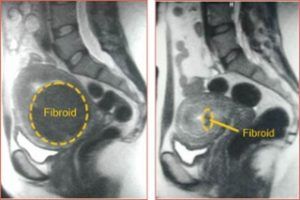 6. Treat All of Your Fibroids
6. Treat All of Your Fibroids
During UFE, the interventional radiologist can treat all of the fibroids during one procedure. Using imaging technology the interventional radiologist can visualize the blood flow to a particular fibroid and target the beads to that specific area. If there are multiple areas to treat, the position of the catheter can easily be adjusted.
7. Fibroid Symptoms Improve
UFE is effective for the treatment of uterine fibroid symptoms. Three months after UFE, 86 – 90% of women report an improvement in bleeding. At 2 years, 90% still report improvement. A study conducted on 400 patients did a follow-up about 16 months after the procedure and showed that menstrual pain was improved in 79% of the women, and menstrual bleeding was improved in 84%. [iv]
8. Fibroids Shrink
As a result of blocking the blood flow to the fibroids, they shrink and the uterus shrinks with them. The uterus will shrink on average by almost a third within 3 to 6 months after UFE.[v] Three months after UFE, 64 – 93% of women note improvement in symptoms related to the size of the fibroids.[iv]
9. Preservation of Your Uterus
UFE treats fibroids by blocking their blood supply. With UFE, your uterus is spared. This is different from other surgical treatments for fibroids such as hysterectomy. Even with myomectomy, the tissue of the uterus may need to be cut to remove the fibroid.
There are a lot of reasons to consider UFE to treat your fibroids. If you think that UFE could be a good fit for you, you should find a vascular specialist who uses UFE as a uterine fibroid treatment.
Sources:
i Firouznia, K., et al., Uterine artery embolization for treatment of symptomatic fibroids: a review of the evidence. Iran Red Cres Med J, 2013. 15(12): p. 1-6.
ii http://www.sirweb.org/patients/uterine-fibroids/
iii Mara, M. and K. Kubinova, Embolization of uterine fibroids from the point of view of the gynecologist: pros and cons. Int J Womens Health, 2014. 6: p. 623-9.
iv Spies, J.B., Current evidence in uterine embolization for fibroids. Semin Intervent Radiol, 2013. 30(4): p. 340-346.
v Torre, A., et al., Uterine artery embolization for severe symptomatic fibroids: effects on fertility and symptoms. Hum Reprod, 2014. 29(3): p. 490-501.
